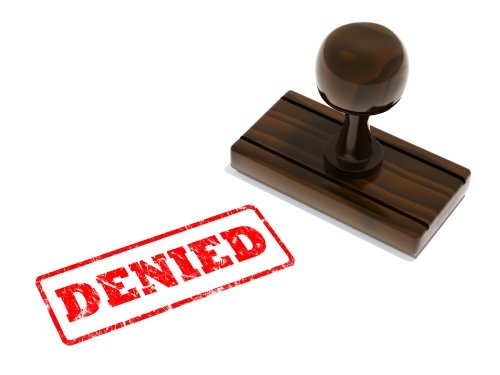[ad_1]
“By permitting Redbubble to evade legal responsibility, Y.Y.G.M. contended that the Ninth Circuit’s ruling ‘will tremendously improve the scope of on-line infringement.’”
On February 20, the U.S. Supreme Court docket issued an order list that denied petitions for writ of certiorari filed in a minimum of 5 mental property instances. Whereas none of those instances induced giant numbers of amici to ask the Court docket to grant cert, they do signify a number of present points in IP legislation that stay unaddressed. From the usage of joinder to evade time-bar limits in patent validity proceedings to the service of course of required for a grant of preliminary injunction, the Court docket’s cert denials depart a number of open questions with which the patent and trademark group will doubtless grapple.
VirnetX v. Mangrove: Ruling Permitting Joinder to Evade IPR Time Limits Stands
Patent proprietor VirnetX, which has fought a authorized battle with shopper tech big Apple for greater than a decade, had appealed final March’s Federal Circuit ruling that affirmed the Patent Trial and Attraction Board’s (PTAB) resolution to invalidate safe communications patent claims owned by VirnetX. VirnetX’s petition for writ had raised points with the PTAB’s dealing with of inter partes assessment (IPR) proceedings that Apple was capable of be a part of regardless of being barred from submitting its personal IPR petition by the one-year time bar beneath 35 U.S.C. § 315. VirnetX additionally invoked the Federal Vacancies Reform Act (FVRA), difficult the legality of denials for Director assessment issued by the Commissioner of Patents whereas the Director place on the U.S. Patent and Trademark Workplace (USPTO) was vacant.
In its respondent’s brief, Apple and IPR petitioners Mangrove Companions and Black Swamp IP argued that Apple’s earlier IPR petition, correctly filed inside Part 315(b)’s time-bar, allowed the PTAB to correctly be a part of Apple as ruled by Part 315(c). Respondents additionally contended that the FVRA was inapplicable to this case because the Commissioner of Patents was performing non-exclusive features of the Director. USPTO Director Kathi Vidal had filed a brief for the federal respondent in opposition of VirnetX’s petition, noting that Apple’s IPR challenges had been completely duplicative of these raised by Mangrove Companions’ petition.
Y.Y.G.M. v. Redbubble: Ninth Circuit’s Heightened Contributory Infringement Normal Survives
After Australian print-on-demand firm Redbubble “undertook no significant effort” to cease gross sales of products infringing its Brandy Melville emblems, Swiss firm Y.Y.G.M. filed a lawsuit in U.S. district court docket that led to a jury verdict that Redbubble was chargeable for contributory trademark infringement. The $500,000-plus verdict for Y.Y.G.M. was worn out on the Ninth Circuit, nonetheless, after the appellate court docket issued a ruling discovering that Redbubble was solely liable if it knew that it was aiding, and didn’t cease aiding, “particular situations of infringement or particular infringers.”
Y.Y.G.M.’s petition for writ argued that the Ninth Circuit’s ruling conflicted with selections from the Tenth Circuit and the Second Circuit, which have discovered that defendants will be held chargeable for contributory infringement if that they had cause to know of particular infringements. In accordance with Y.Y.G.M., instances out of these regional circuits have upheld contributory legal responsibility with out information of the particular infringement or infringer. By permitting Redbubble to evade legal responsibility, Y.Y.G.M. contended that the Ninth Circuit’s ruling “will tremendously improve the scope of on-line infringement.”
Liquidia v. UTC: Induced Infringement Findings Stay Publish-Invalidation
United Therapeutics Company (UTC) filed a patent infringement go well with in opposition to Liquidia Applied sciences over Liquidia’s Yutrepia, an inhalable remedy for pulmonary arterial hypertension (PAH). Liquidia responded by submitting an IPR petition to problem UTC’s patent claims overlaying a way of treating PAH with inhalable treprostinil. Though the PTAB discovered unpatentable every declare asserted by UTC in district court docket, the district court docket dominated as a substitute that every one claims had been legitimate and that Liquidia induced infringement of UTC’s patent claims.
Liquidia’s petition for writ argued that the district court docket and Federal Circuit had been certain to present preclusive impact to the PTAB’s invalidation findings beneath Supreme Court docket precedent, specifically Commil USA v. Cisco and B&B {Hardware} v. Hargis. IPWatchdog previously covered Liquidia’s petition, which argued that Commil left invalidation on the PTAB as a respectable path to evade infringement legal responsibility, and that B&B {Hardware} established that concern preclusion applies when the identical concern is earlier than a court docket and an administrative company.
The Supreme Court docket’s order listing famous that Justice Ketanji Brown Jackson took no half in contemplating Liquidia’s petition for writ as a consequence of choose disqualification guidelines codified at 28 U.S.C. § 455.
Tehrani v. Hamilton Techs.: Improper POSITA, Opposite Proof Result in Invalidation
Dr. Fleur Tehrani, the only inventor listed on U.S. Patent No. 7802571, raised a sequence of points in her petition for writ over the authorized requirements set by the PTAB’s invalidation of the ‘571 patent’s claims, which cowl an automatic air flow system during which oxygenation is managed for a affected person’s subsequent breath. Dr. Tehrani faulted the Board for accepting knowledgeable testimony from a biologist whose respiratory therapist’s license expired greater than 40 years earlier than the proceedings. Dr. Tehrani additionally claimed that the PTAB mixed prior artwork references that taught mutually unique strategies.
Dr. Tehrani’s petition for writ argued that the Federal Circuit’s affirmation of the PTAB relied on prior artwork that taught unfaithful information, specifically a non-reviewed convention presentation that allegedly used no controls and a U.S. patent that disclosed an unstable system that Tehrani known as a “deadly technique.” The petition contended that the prior artwork mixtures steered by respondent Hamilton Applied sciences and affirmed by the CAFC “usually are not potential and are in opposition to scientific ideas.”
Shenzen Sanlida v. Whirlpool: Rule 65 Requires Discover, Not Service, Earlier than PI Entry
Whirlpool filed a trademark infringement lawsuit in opposition to Chinese language equipment importer Shenzen Sanlida Electrical Expertise in January 2022 for its gross sales of stand mixers that had been just like these bought beneath Whirlpool’s KitchenAid model. On the day Whirlpool filed its criticism, it additionally sought a preliminary injunction in opposition to Shenzen Sanlida, which the court docket granted over Shenzen Sanlida’s arguments that the court docket lacked private jurisdiction as a result of it had not acquired any service of course of from Whirlpool.
In Shenzen Sanlida’s petition for writ, it argued that the Fifth Circuit’s resolution to affirm the preliminary injunction grant with out service of course of deepened a circuit break up on the appliance of Federal Rule of Procedure 65, which governs injunctive reduction. Shenzen Sanlida cited selections of the Seventh Circuit, Federal Circuit and Fourth Circuit that stand for the premise that service of course of and never discover alone are required earlier than a district court docket can grant injunctive reduction.
Picture Supply: Deposit Photographs
Writer: Rangizzz
Picture ID: 4540592

[ad_2]
Source link

